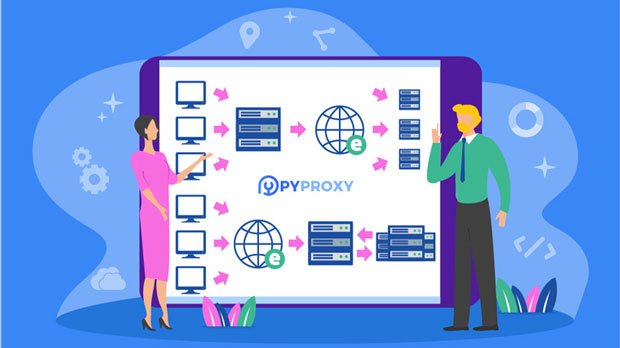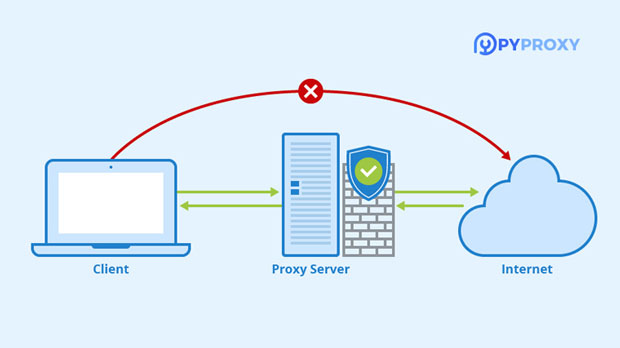When businesses look into socks5 proxy services, the price can vary significantly based on several factors. The cost generally depends on the scale of usage, the region, the specific needs of the enterprise, and the service provider’s pricing structure. For most companies, the price will differ between a few dollars per month for basic services to hundreds or even thousands of dollars for high-performance, large-scale usage with additional features. This article delves into the various factors that influence the price of SOCKS5 proxy services and provides an in-depth analysis to help businesses understand their costs and make informed decisions. Understanding SOCKS5 Proxy Services socks5 proxies are versatile, high-performance tools used by businesses to manage online traffic. Unlike standard HTTP proxies, SOCKS5 can handle all types of internet traffic, including HTTP, FTP, and P2P, providing more flexibility for enterprises. This flexibility is crucial for businesses that need to protect their identity, access region-restricted content, or optimize their internet performance for various use cases such as web scraping, data mining, or secure browsing.The basic function of a SOCKS5 proxy is to route internet traffic through an intermediary server, masking the original IP address and allowing businesses to access the web securely and anonymously. This makes SOCKS5 proxies ideal for enterprises that prioritize security, data privacy, and unblocked access to certain content or regions. The pricing of these services largely depends on the provider’s infrastructure, the speed of the service, and additional features like encryption, bandwidth limits, and customer support.Factors Influencing the Cost of SOCKS5 Proxy ServicesSeveral factors determine how much an enterprise will pay for SOCKS5 proxy services. These factors include:1. Scale of UsageThe amount of bandwidth or the number of IPs a business needs is one of the biggest cost drivers for SOCKS5 proxies. Small businesses or startups may only require a limited number of proxies, which can be rented for a modest fee, typically starting from as low as $10 to $30 per month for a small package. On the other hand, large enterprises with global operations may require thousands of proxies and extensive bandwidth. These businesses can expect to pay anywhere from $200 to $1,000 per month for high-capacity services that meet their needs.2. Location and GeolocationThe location of proxies can also affect their cost. SOCKS5 proxies that are based in regions with high demand, such as the United States, the UK, or other major digital hubs, tend to be more expensive. Additionally, proxies located in countries with stricter regulatory environments or limited access to the internet may come at a premium. Enterprises that require proxies in specific countries for their operations or research will often pay more for these services.3. Type of Proxy (Static vs. Rotating)Enterprises have the option to choose between static and rotating proxies. Static proxies are fixed IP addresses, which are often used for tasks that require consistent access to certain websites or resources. These proxies are typically less expensive because they offer limited flexibility. Rotating proxies, on the other hand, change IP addresses frequently, making them ideal for tasks like web scraping or data mining, where the risk of being blocked is higher. These services tend to be more expensive due to the complexity of providing such dynamic features.4. Service FeaturesMany SOCKS5 proxy providers offer additional features that can influence the price. These features may include encryption, advanced security protocols, dedicated customer support, and high availability guarantees. Proxies that offer these features often come at a premium, especially for businesses that require a higher level of performance, security, or reliability. For instance, a SOCKS5 proxy service with strong encryption might cost $50–$200 per month, while basic proxies without any advanced features might cost only $10–$30 per month.5. Volume and Subscription TermsMost SOCKS5 proxy providers offer discounts based on subscription duration or volume. For example, enterprises that commit to long-term contracts (e.g., one year or more) may receive a discount on the monthly service fee. Additionally, purchasing proxies in bulk often leads to a lower per-unit cost. Larger enterprises that need thousands of proxies might pay a lower price per proxy compared to businesses that only require a few proxies.6. Bandwidth and SpeedAnother important factor in the cost of SOCKS5 proxies is the speed and bandwidth offered by the service. High-speed proxies that allow for fast data transfers and a seamless user experience tend to cost more. If an enterprise needs proxies with higher bandwidth to handle large volumes of data or to ensure minimal latency during high-traffic operations, they can expect to pay more for these premium services. Low-bandwidth proxies are cheaper but may not be suitable for enterprises that require fast and uninterrupted performance.Typical Pricing for Different Business NeedsWhile the pricing structure of SOCKS5 proxies can vary significantly, a general idea of costs can be provided based on different business needs. For small businesses or individuals who only require a limited number of proxies and minimal bandwidth, the cost can range from $10 to $50 per month. These services usually provide access to a small pool of IP addresses, with limited additional features.For medium-sized enterprises that need a more robust solution, including more IPs, higher bandwidth, and additional security features, the price typically ranges from $50 to $300 per month. These businesses may also choose to have rotating proxies or specific geolocation requirements, which can increase the cost.Larger enterprises or organizations that need a significant amount of IP addresses, high-speed performance, and advanced features like encryption, full 24/7 customer support, and high availability guarantees can expect to pay anywhere from $500 to $2,000 or more per month. These high-tier services cater to businesses with global operations and complex networking needs.Conclusion: Understanding the Value of SOCKS5 Proxies for EnterprisesWhen considering SOCKS5 proxies for business purposes, the price can vary widely based on the enterprise’s specific requirements. Factors such as scale of usage, location, type of proxy, service features, and subscription terms all play a role in determining the final cost. For businesses looking for enhanced privacy, security, or the ability to bypass geographical restrictions, SOCKS5 proxies offer substantial value. However, enterprises must carefully assess their needs and compare available services to ensure they are getting the best value for their investment.In summary, small businesses might spend as little as $10–$30 per month, while large enterprises may need to budget anywhere from $200 to $2,000 per month depending on their requirements. Ultimately, understanding the specific needs of the business will help in making a cost-effective and value-driven decision when choosing a SOCKS5 proxy service.
Jan 09, 2025





















































